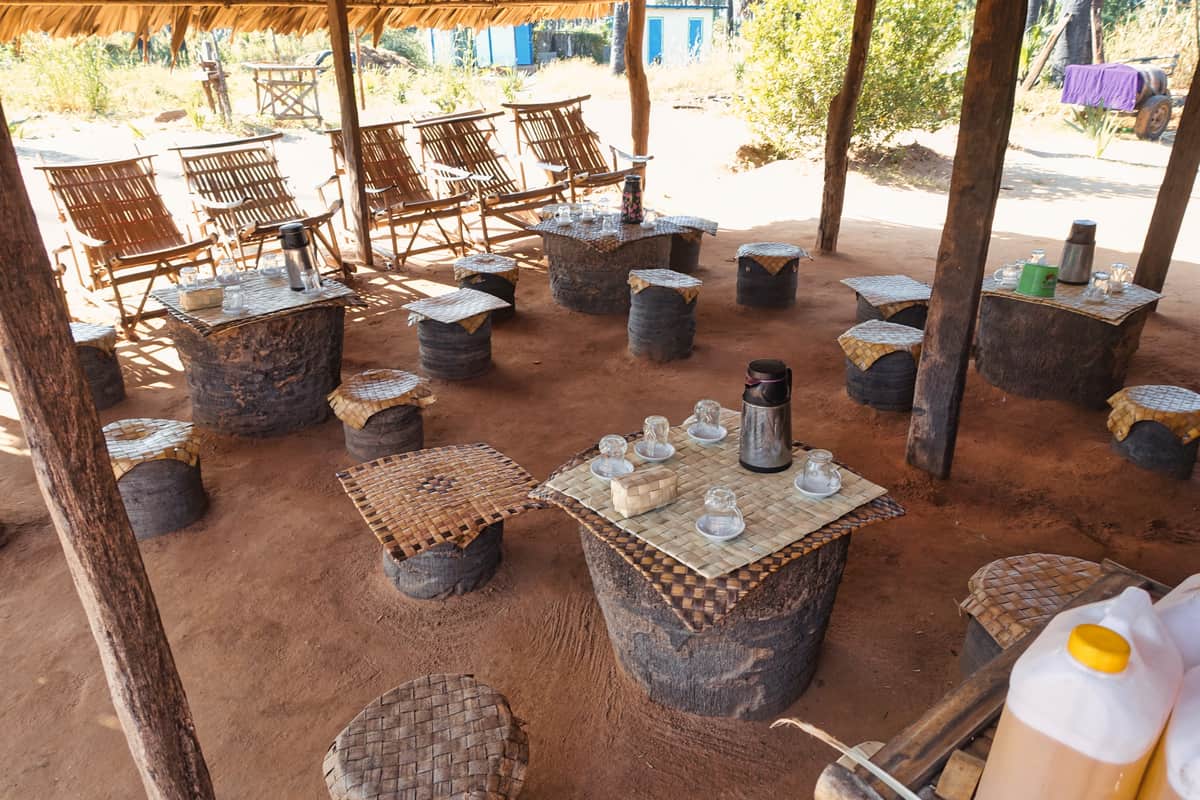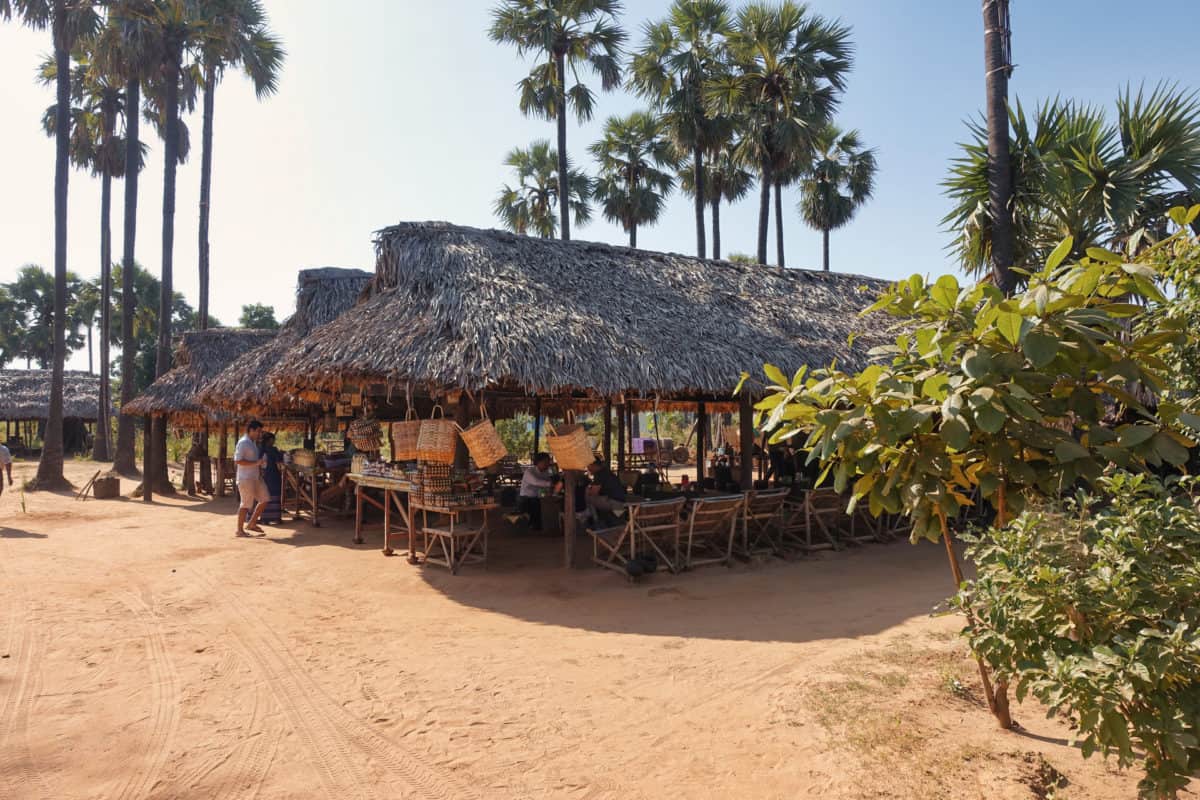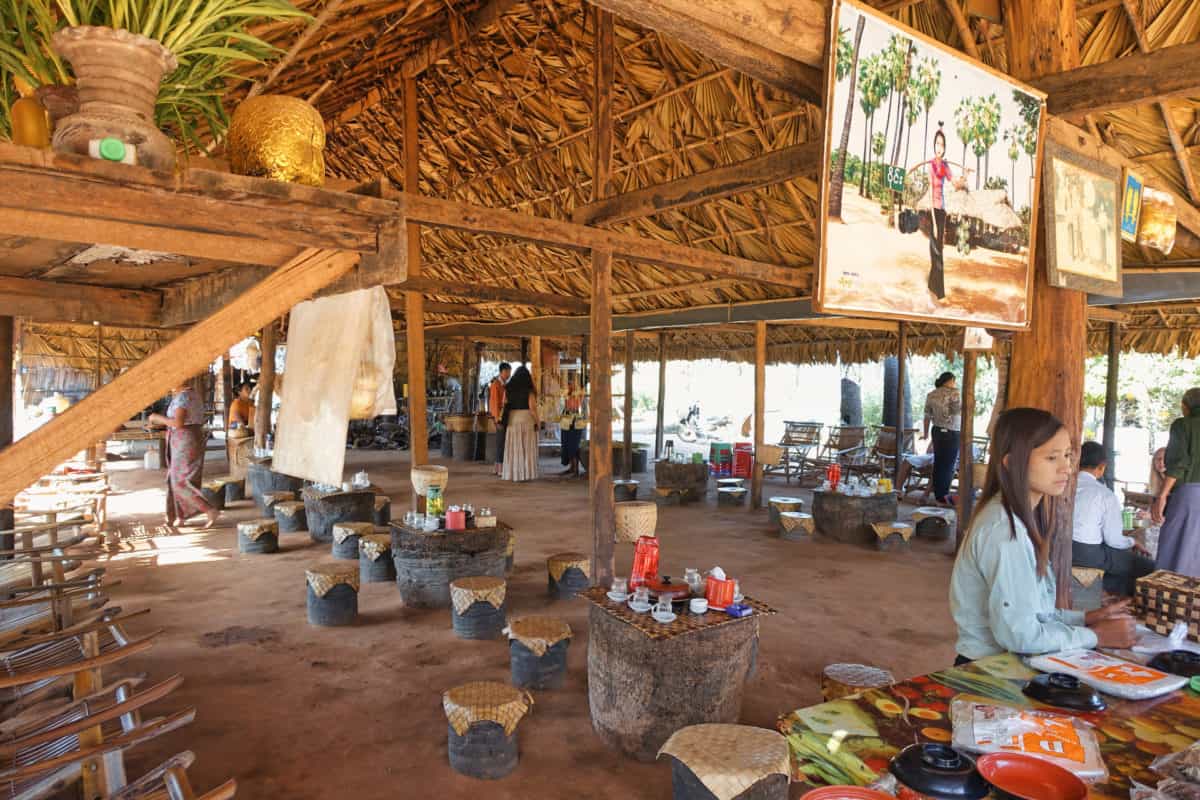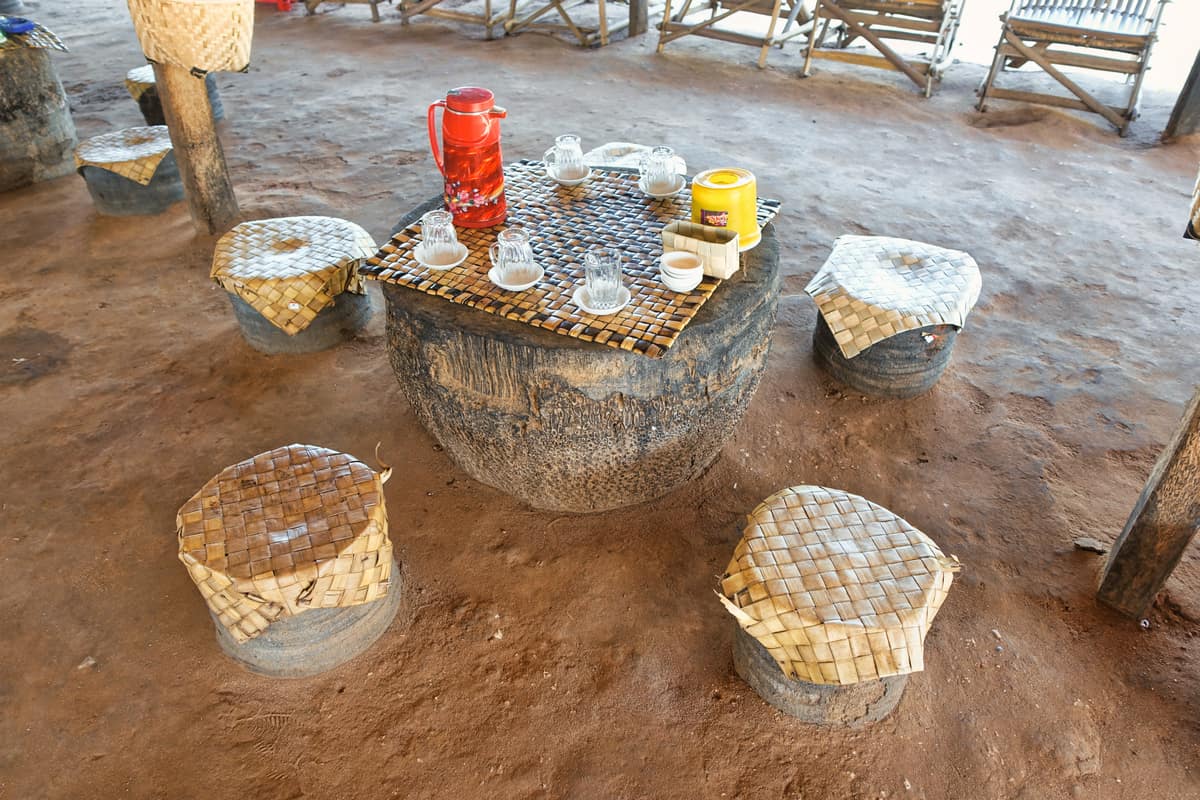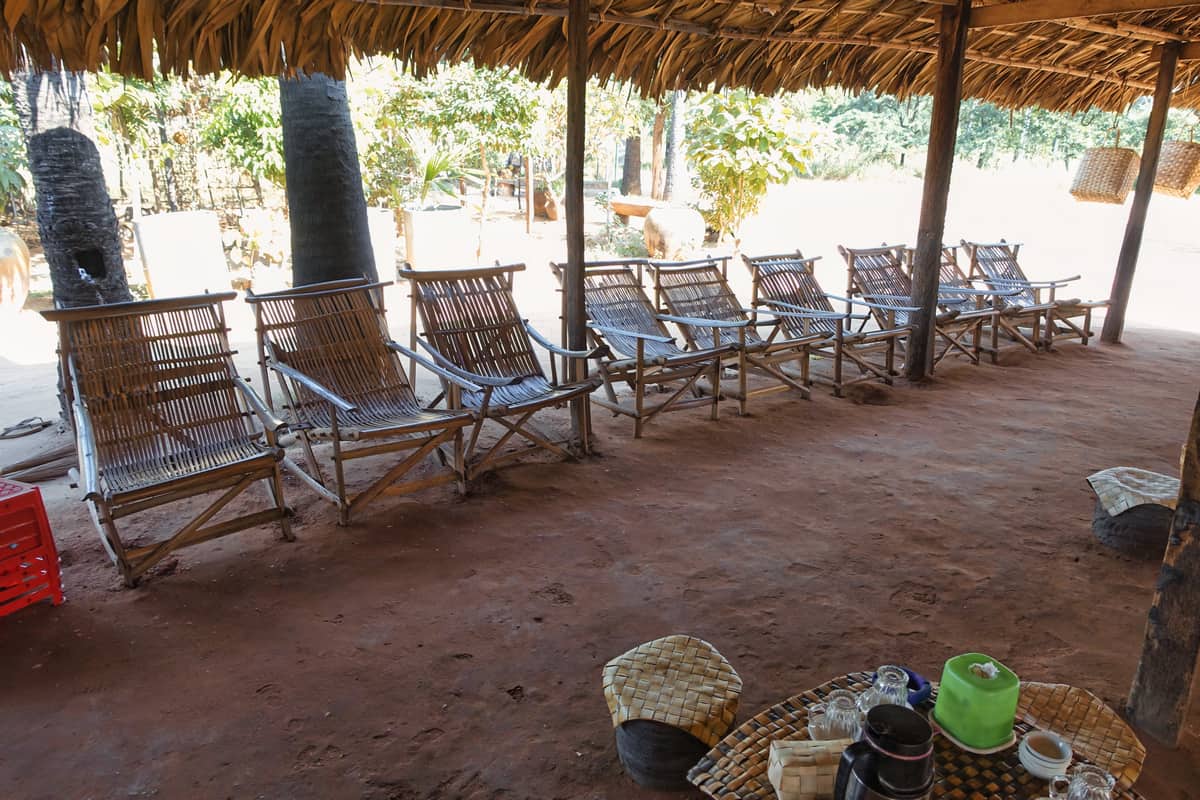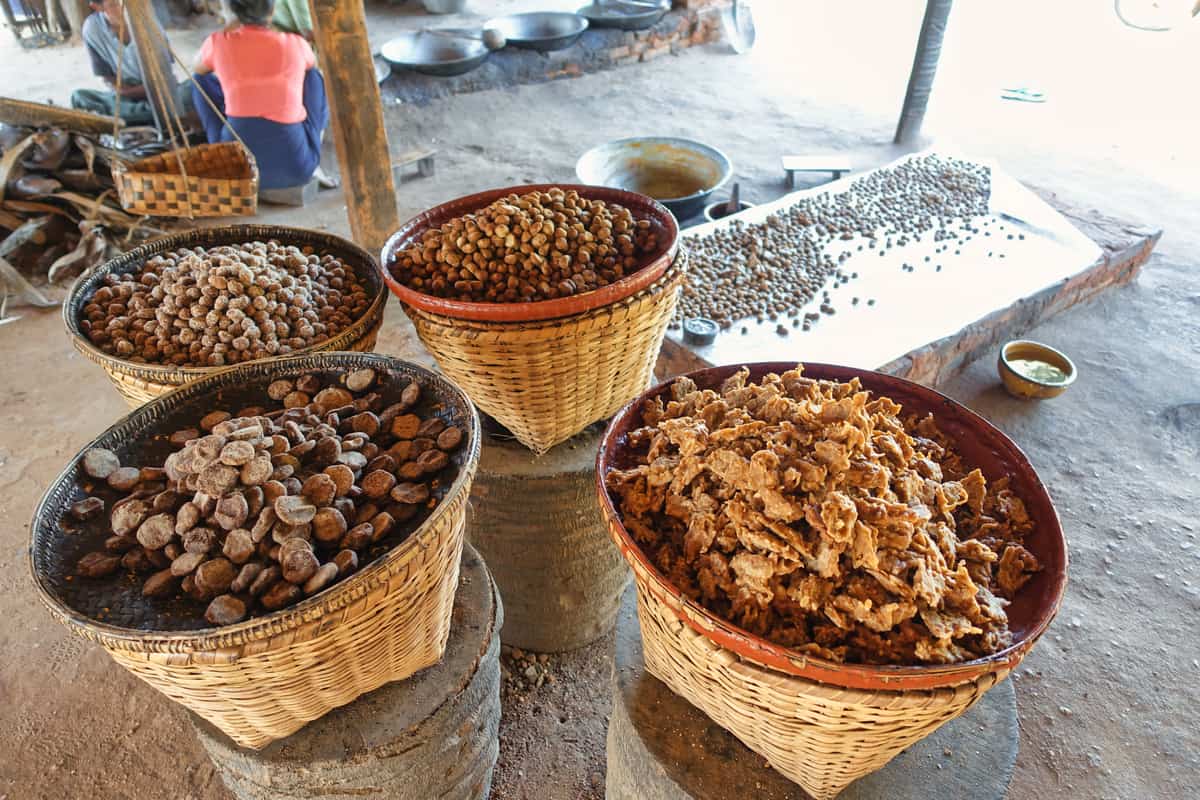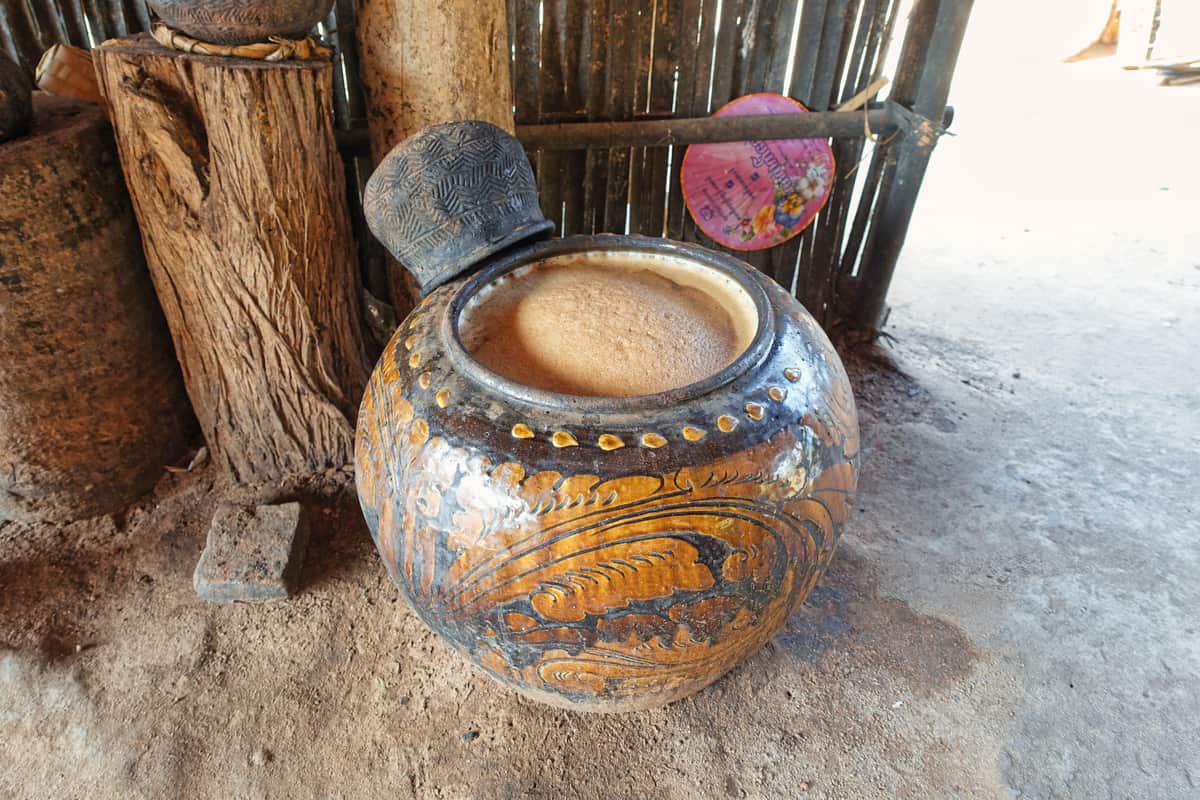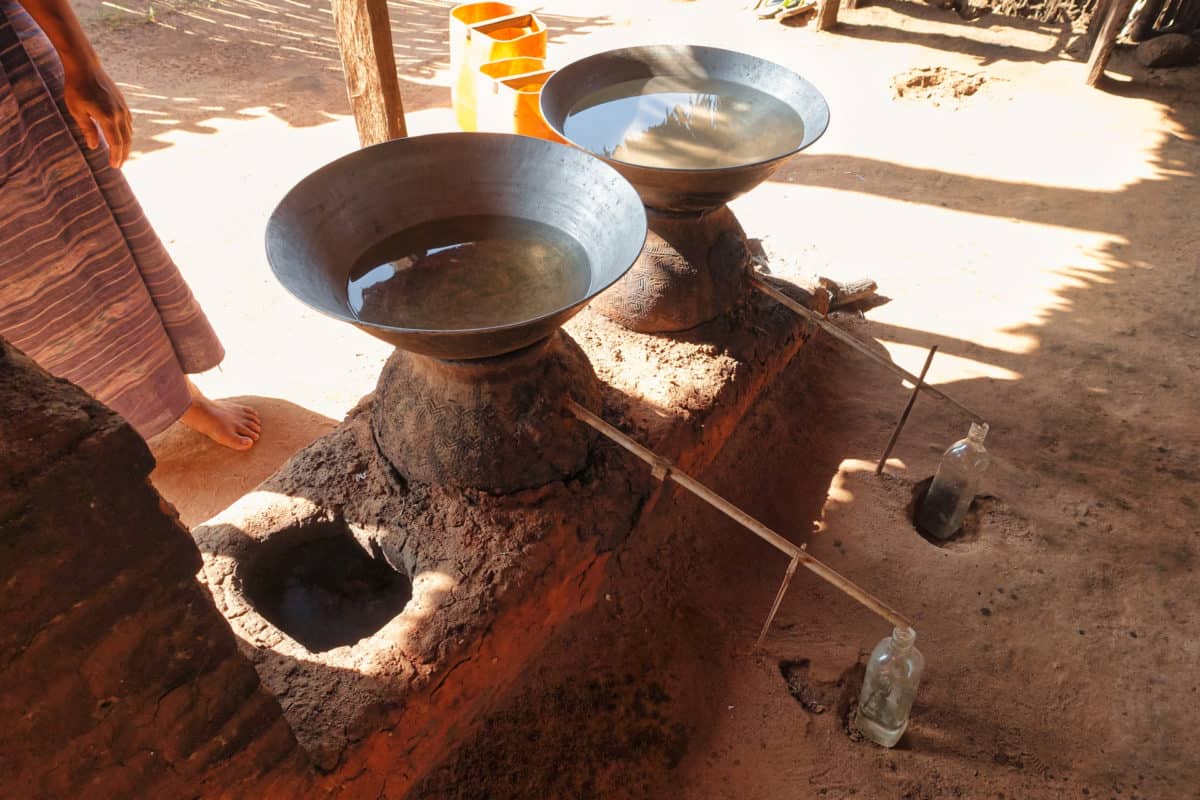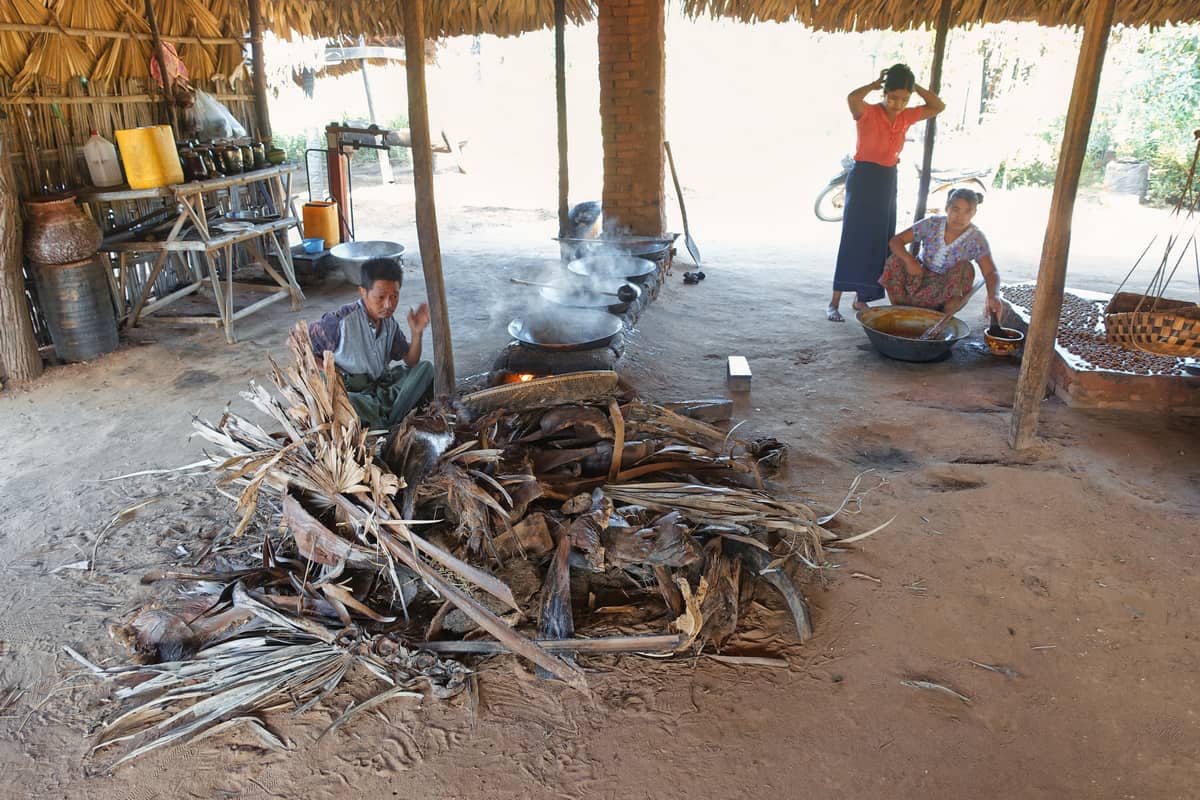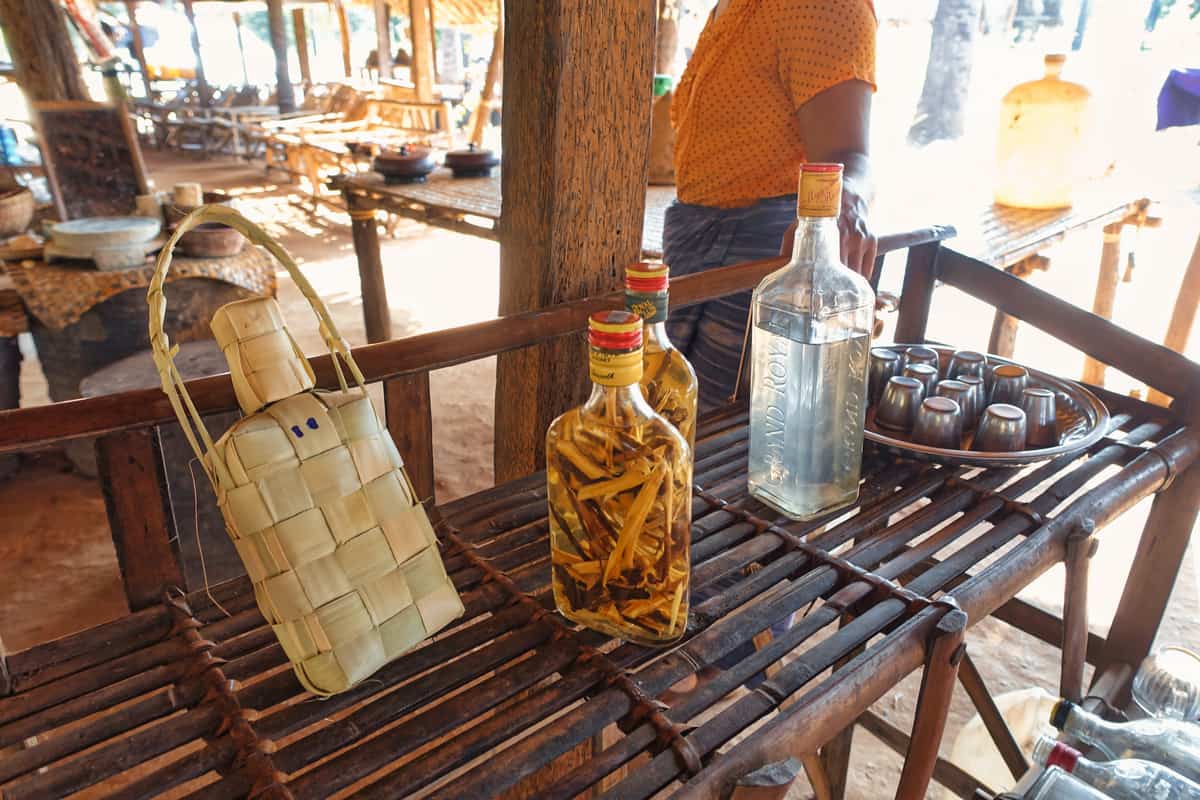Southeast Asia Tour 2015
Bagan | Mount Popa | Myanmar
01 Dec 2015 | Tue
Day 13 of 46
What is Distilled Palm Toddy Wine and How it is Made in Myanmar
On our trip to visit Mount Popa, we stopped off at a Palm Farm and Distillery. In a previous post here, I covered how they made peanut oil and palm sweets/snacks. But in this post, I will cover the process of how they make distilled palm wine (called “toddy” in Myanmar).
What is Distilled Palm Toddy Wine?
Myanmar toddy wine is a traditional alcoholic beverage that has been popular in the country of Myanmar for centuries. It is made from the sap of the toddy palm, which is also known as palm wine or coconut wine. The sap is extracted from the tree and then fermented to produce a sweet, sour, and slightly alcoholic drink.
Toddy wine has been an important part of life in Myanmar for generations. It is used in ceremonies, festivals, and special occasions such as weddings. It’s also served at many restaurants throughout Myanmar as an accompanying beverage with food. Toddy wine has a light golden color and can range from mildly sweet to intensely sour depending on how long it ferments before it is consumed. It’s usually served chilled, but can also be heated up for a more intense flavor.
How Distilled Palm Toddy Wine is Made in Myanmar
The first step in making palm-based foods and wine is getting the sap from the palm tree. This requires a skilled “tapper” to climb to the tops of palm trees barefooted. They do this with the help of very simplistic bamboo-pegged ladders. These toddy palm trees often grow to heights of up to 100 feet (ca. 30 m), so climbing them is quite dangerous.
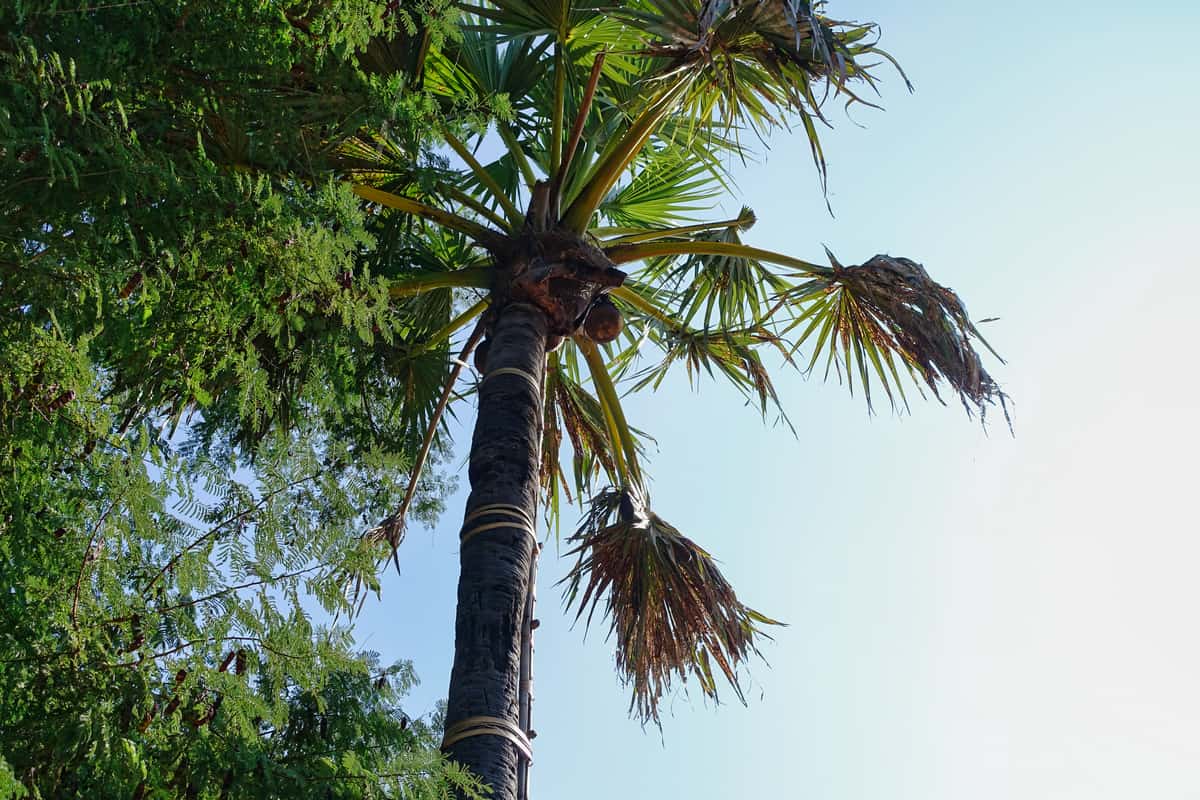
On the way up, they carry a large knife (encased in a wooded sheath) – which is used to cut or “tap” the sap from the young coconut flower clusters. After this, they hang black pots so that the sap can drip overnight.
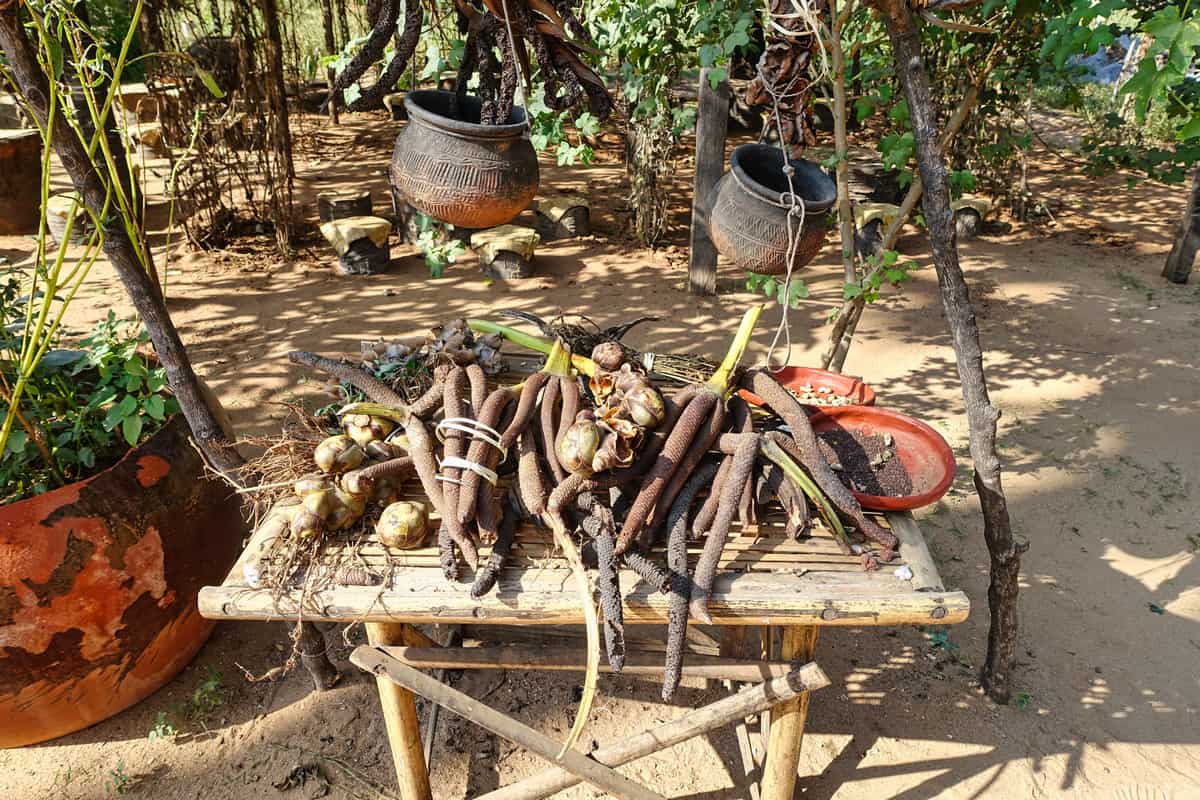
The next day, the tapper will return to switch out the full sap pots with new empty ones. However, since palm juice naturally ferments by itself (due to natural yeasts in the air and sometimes from residual yeast left in the collecting container), the tapper can choose to leave it in the pots for a longer period, if they want a “stronger” batch.
Within two hours, fermentation yields an aromatic wine of up to 4% alcohol content, mildly intoxicating and sweet. The wine may be allowed to ferment longer, up to a day, to yield a stronger, more sour, and acidic taste, which some people prefer. Longer fermentation produces vinegar instead of stronger wine.
The process of making palm toddy wine requires the collected palm juice to be boiled/cooked down until it forms a dried “jaggery” – small concentrated chunks of brown palm sugar.
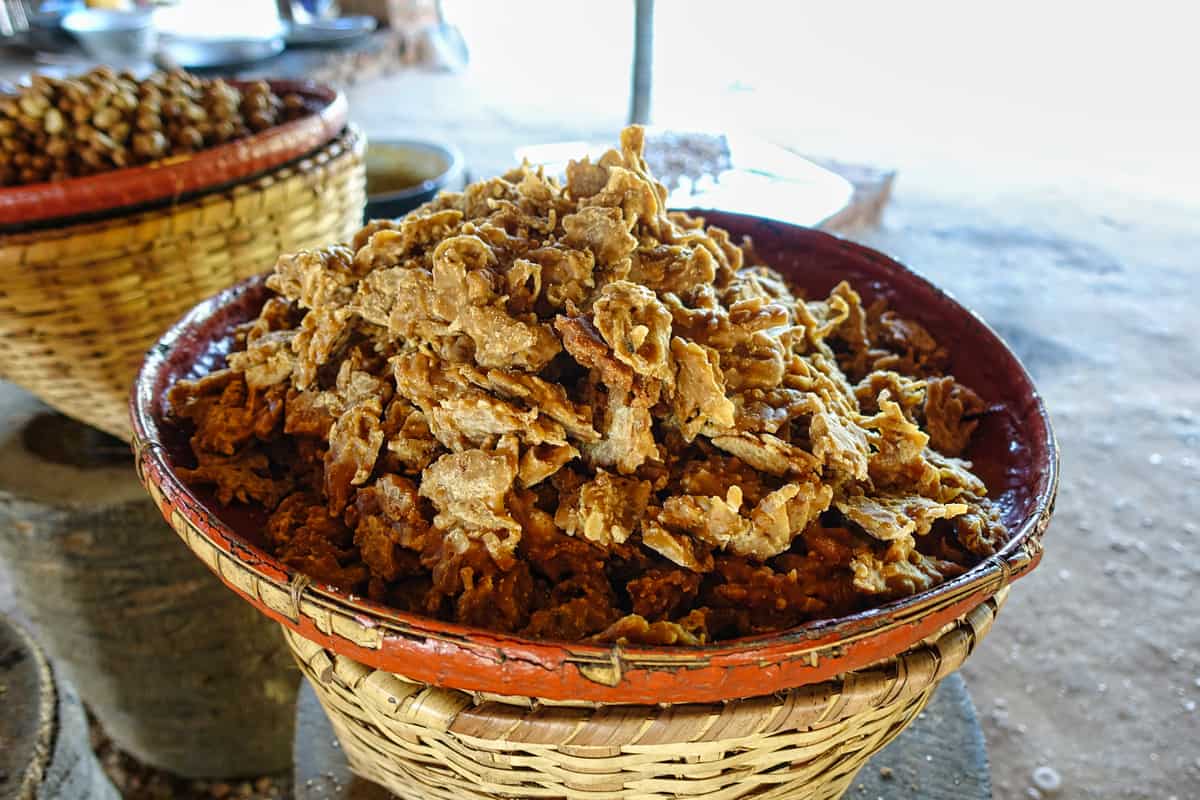
Up next is the fermentation process, which takes place in large ceramic containers. These are prepared by adding fermented sticky rice (on the bottom of the container) with jaggery and water. The fermentation process takes place when the sugary jaggery activates the yeast in the sticky rice.
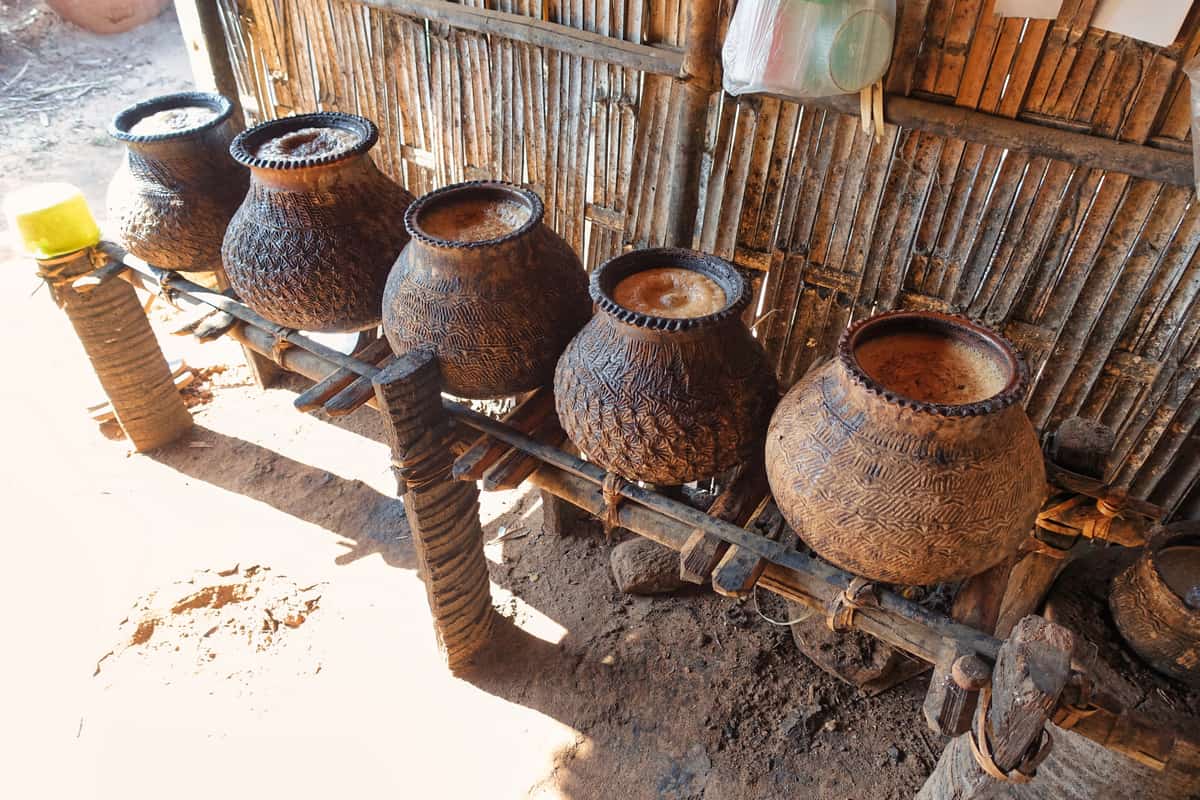
After a couple of days, the distillation process begins with the ceramic containers being emptied into a series of clay pots that are placed over a charcoal fire. Each clay pot has a flat metal funnel (center of the pot) that connects to a tube that exits out the side (of the pot).
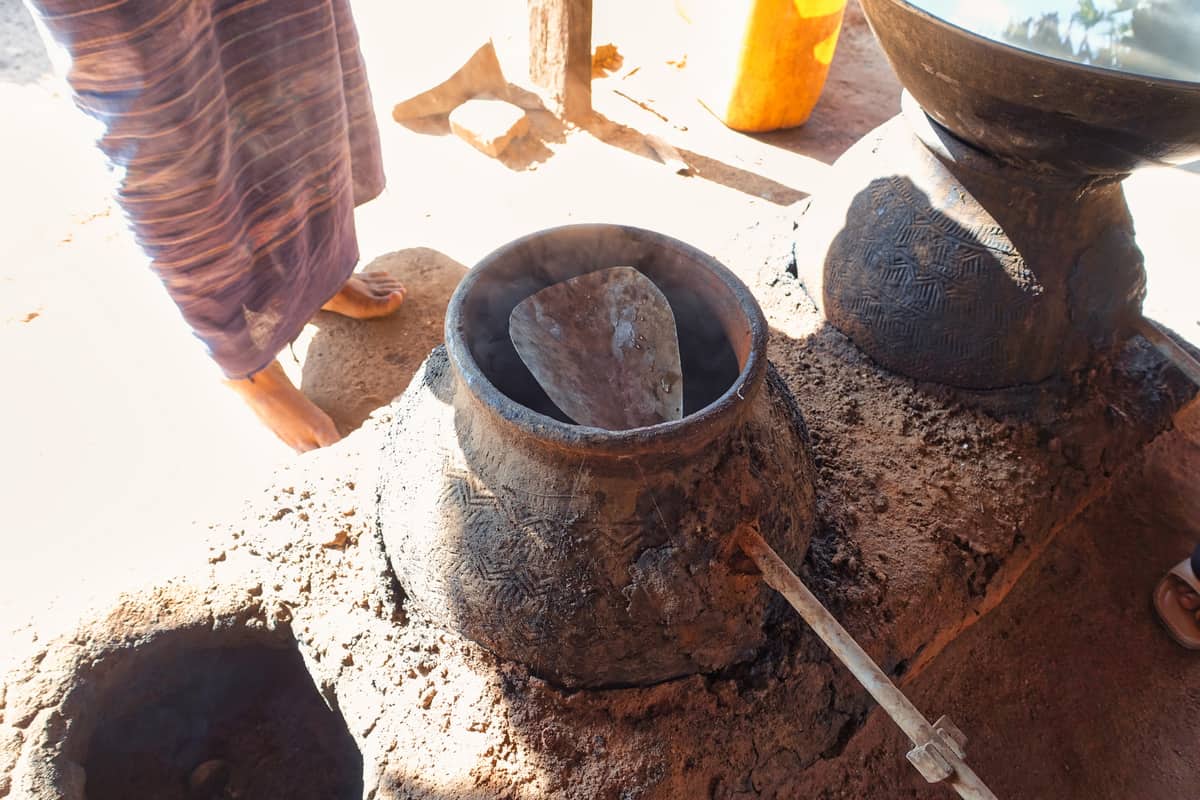
Large metal pots/woks are filled with cold water and placed on top of the pots filled with fermented jaggery/sticky rice mash.
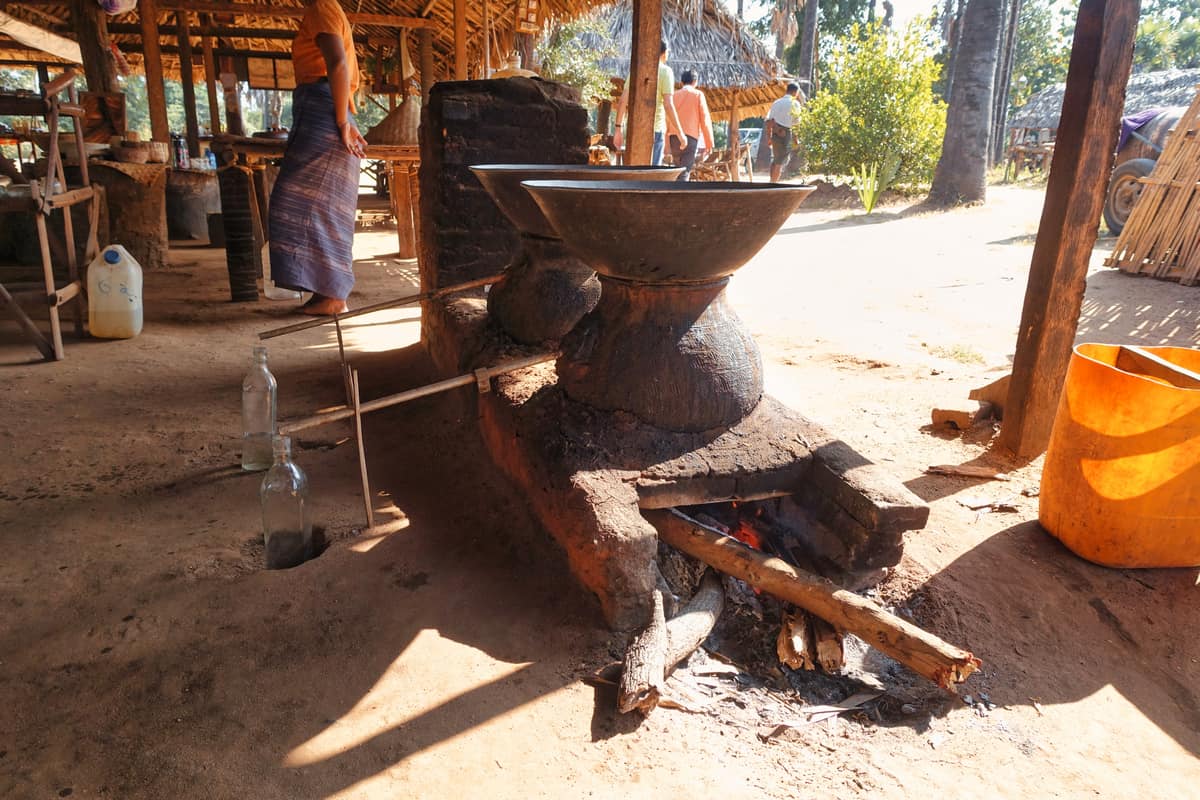
The distillation process takes place when the top water-filled pot creates condensation (underneath), that drips onto the metal flat metal funnel, continuing through the pipe and into the glass bottle. The distillation process usually takes a few hours.
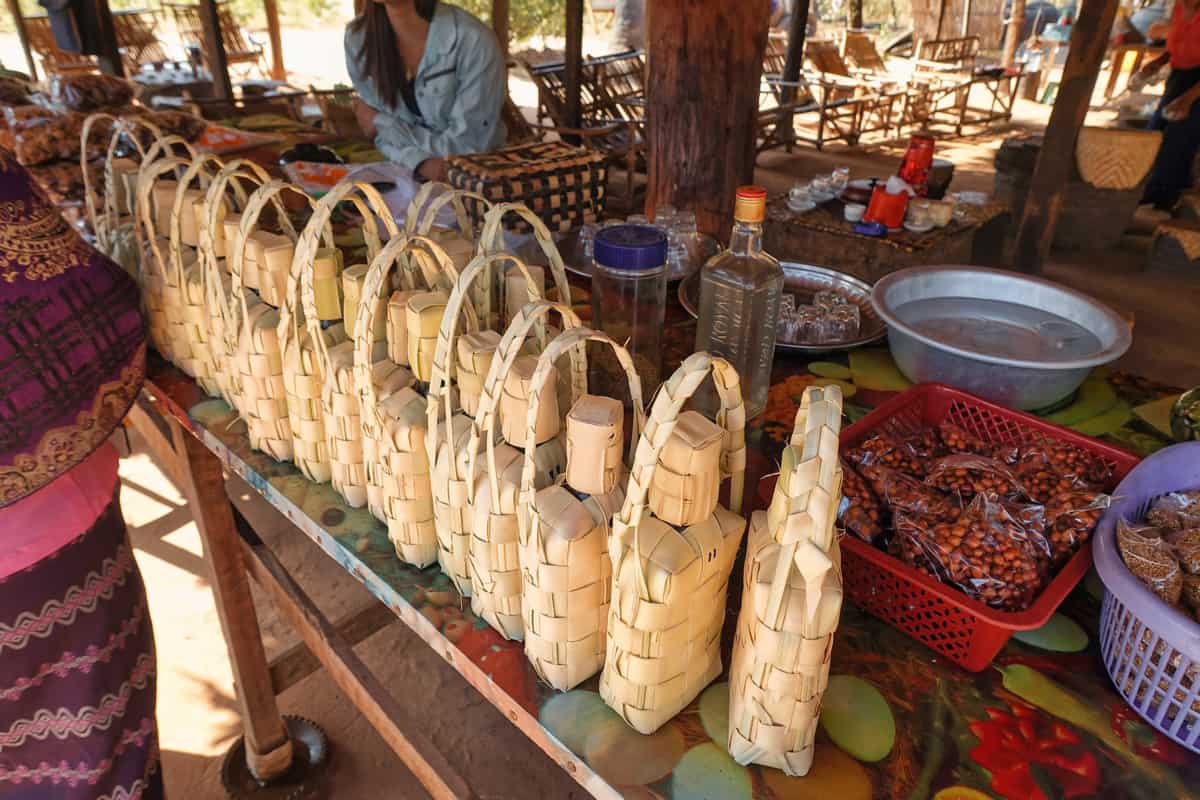
This roadside Palm Sugar Demonstration Farm and Distillery is set up to cater to tourists, with several sitting areas for eating, sampling, and drinking their various food and alcoholic beverages.
